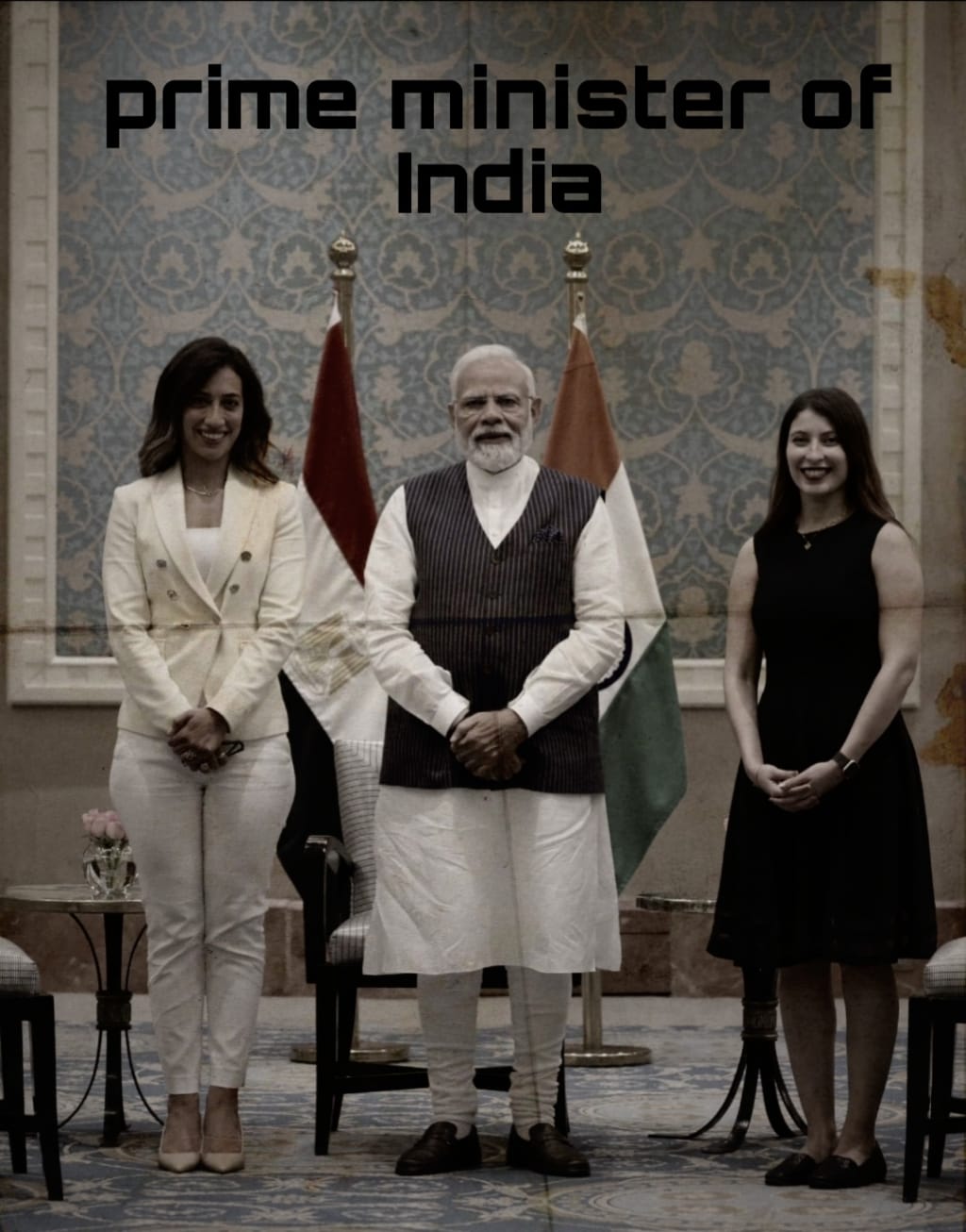Content warning
This story may contain sensitive material or discuss topics that some readers may find distressing. Reader discretion is advised. The views and opinions expressed in this story are those of the author and do not necessarily reflect the official policy or position of Vocal.
Empowering India's Semiconductor
Revolution: A Tale of Narendra Modi and India-US Relations

Once upon a time in the vast land of India, the country stood at the cusp of a technological revolution. The global semiconductor industry was rapidly advancing, and India yearned to join the league of nations leading this transformative wave. At the helm of this journey was Narendra Modi, the visionary Prime Minister with an unwavering commitment to propel India's progress.
Aware that semiconductors were the backbone of modern technology, Narendra Modi recognized the need to bolster India's capabilities in this critical domain. He understood that it was not only a matter of economic growth but also the key to unlocking India's potential as a global technology powerhouse.
To achieve this ambitious goal, Narendra Modi identified the significance of fostering stronger ties with the United States, a global leader in semiconductor manufacturing and innovation. Recognizing the common interests shared by both nations, he embarked on a journey to forge a strategic partnership that would accelerate India's semiconductor revolution.
With a firm resolve, Narendra Modi embarked on a diplomatic mission to Washington, D.C., where he met with the U.S. President, who was equally enthusiastic about deepening ties with India. The two leaders engaged in fruitful discussions, realizing the immense potential of collaboration in the semiconductor sector. They envisioned a future where India and the United States would work hand in hand to advance technology and shape the global landscape.
Back in India, Narendra Modi rallied his country's top minds and experts in semiconductor technology. He emphasized the importance of innovation and research to bridge the existing gaps. Recognizing the need for a robust ecosystem, the Prime Minister established partnerships between Indian and American universities and research institutions. This collaboration would enable the exchange of knowledge, research, and best practices, fostering a nurturing environment for semiconductor development.
Under the guidance of Narendra Modi, India launched a series of ambitious initiatives to boost semiconductor manufacturing within its borders. He unveiled policies to attract global investments, offering incentives to multinational companies to establish semiconductor fabrication facilities in India. Simultaneously, the Indian government bolstered its support for indigenous startups and entrepreneurs, encouraging them to contribute to the growth of the semiconductor industry.
As a result of these efforts, India witnessed a steady rise in semiconductor manufacturing capabilities. Cutting-edge fabrication facilities began to dot the landscape, attracting major players from the United States and other countries. The collaborations between Indian and American companies became increasingly fruitful, with joint ventures leading to breakthroughs in semiconductor design and production.
The impact of India's semiconductor revolution rippled through various sectors, transforming the nation's economy and societal fabric. From smartphones to renewable energy, automotive to healthcare, semiconductors became the driving force behind innovation, propelling India into a new era of progress and prosperity.
Moreover, the partnership between India and the United States thrived beyond the realm of technology. As the two nations deepened their collaboration, they strengthened their diplomatic ties, fostering mutual trust and understanding. Cultural exchanges flourished, and people-to-people connections were forged, creating an unbreakable bond between the peoples of India and the United States.
In recognition of Narendra Modi's remarkable leadership, the world applauded India's semiconductor revolution. The country had risen to become a global hub of semiconductor manufacturing and innovation, competing with the best on the world stage
Once upon a time in the vast land of India, the country stood at the cusp of a technological revolution. The global semiconductor industry was rapidly advancing, and India yearned to join the league of nations leading this transformative wave. At the helm of this journey was Narendra Modi, the visionary Prime Minister with an unwavering commitment to propel India's progress.
Aware that semiconductors were the backbone of modern technology, Narendra Modi recognized the need to bolster India's capabilities in this critical domain. He understood that it was not only a matter of economic growth but also the key to unlocking India's potential as a global technology powerhouse.
To achieve this ambitious goal, Narendra Modi identified the significance of fostering stronger ties with the United States, a global leader in semiconductor manufacturing and innovation. Recognizing the common interests shared by both nations, he embarked on a journey to forge a strategic partnership that would accelerate India's semiconductor revolution.
With a firm resolve, Narendra Modi embarked on a diplomatic mission to Washington, D.C., where he met with the U.S. President, who was equally enthusiastic about deepening ties with India. The two leaders engaged in fruitful discussions, realizing the immense potential of collaboration in the semiconductor sector. They envisioned a future where India and the United States would work hand in hand to advance technology and shape the global landscape.
Back in India, Narendra Modi rallied his country's top minds and experts in semiconductor technology. He emphasized the importance of innovation and research to bridge the existing gaps. Recognizing the need for a robust ecosystem, the Prime Minister established partnerships between Indian and American universities and research institutions. This collaboration would enable the exchange of knowledge, research, and best practices, fostering a nurturing environment for semiconductor development.
Under the guidance of Narendra Modi, India launched a series of ambitious initiatives to boost semiconductor manufacturing within its borders. He unveiled policies to attract global investments, offering incentives to multinational companies to establish semiconductor fabrication facilities in India. Simultaneously, the Indian government bolstered its support for indigenous startups and entrepreneurs, encouraging them to contribute to the growth of the semiconductor industry.
As a result of these efforts, India witnessed a steady rise in semiconductor manufacturing capabilities. Cutting-edge fabrication facilities began to dot the landscape, attracting major players from the United States and other countries. The collaborations between Indian and American companies became increasingly fruitful, with joint ventures leading to breakthroughs in semiconductor design and production.
The impact of India's semiconductor revolution rippled through various sectors, transforming the nation's economy and societal fabric. From smartphones to renewable energy, automotive to healthcare, semiconductors became the driving force behind innovation, propelling India into a new era of progress and prosperity.
Moreover, the partnership between India and the United States thrived beyond the realm of technology. As the two nations deepened their collaboration, they strengthened their diplomatic ties, fostering mutual trust and understanding. Cultural exchanges flourished, and people-to-people connections were forged, creating an unbreakable bond between the peoples of India and the United States.
In recognition of Narendra Modi's remarkable leadership, the world applauded India's semiconductor revolution. The country had risen to become a global hub of semiconductor manufacturing and innovation, competing with the best on the world stage
The story of India's semiconductor revolution underscored the power of visionary leadership and strategic partnerships. Narendra Modi's unwavering commitment to progress, coupled with the robust alliance between India and the United States, propelled India's journey from an aspiring nation to a global technological powerhouse. As the years passed, the tale continued to inspire generations, reminding them that with determination, collaboration, and a shared vision, the world could be transformed for the better.
In a bustling metropolis in India, the hum of innovation and ambition resonated through the air. The nation had set its sights on becoming a dominant player in the global semiconductor industry, and at the forefront of this transformative endeavor was the visionary leader, Narendra Modi.
Recognizing the immense potential of semiconductors to drive economic growth and technological advancements, Narendra Modi spearheaded a national mission to propel India into the forefront of the global semiconductor landscape. He understood that mastering semiconductor technology was not only crucial for economic development but also a means to empower India's youth with cutting-edge skills and opportunities.
To achieve this audacious goal, Narendra Modi recognized the importance of fostering strong ties with the United States, a global leader in semiconductor innovation and manufacturing. He envisioned a strategic partnership that would leverage the expertise of both nations and propel India's semiconductor revolution to new heights.
With unwavering determination, Narendra Modi embarked on a diplomatic journey to strengthen India-US relations in the semiconductor realm. He engaged in intensive discussions with top American leaders and industry experts, forging alliances that would pave the way for collaboration, knowledge exchange, and technological advancements.
Back in India, Narendra Modi harnessed the power of his leadership to drive semiconductor-related initiatives. He laid the foundation for state-of-the-art semiconductor fabrication facilities and research centers across the country, creating an ecosystem that nurtured innovation and development. These centers became the epicenter of cutting-edge research, attracting the brightest minds from India and abroad.
Narendra Modi's government also implemented progressive policies to incentivize global semiconductor companies to establish manufacturing units in India. These policies offered tax benefits, infrastructural support, and streamlined regulatory processes, making India an attractive investment destination for semiconductor giants.
Simultaneously, the Prime Minister recognized the importance of empowering indigenous startups and entrepreneurs in the semiconductor space. He launched initiatives to provide funding, mentorship, and incubation support to budding Indian innovators, enabling them to transform their groundbreaking ideas into tangible products and solutions.
As a result of Narendra Modi's relentless efforts, India's semiconductor landscape experienced a remarkable transformation. The nation's capabilities in chip design, fabrication, and assembly surged forward, leading to an upsurge in semiconductor exports and reducing the country's reliance on imports. Indian semiconductor companies and startups began garnering global recognition, cementing India's position as a formidable player in the industry.
The partnership between India and the United States flourished as both nations benefited from their collaboration. The exchange of knowledge, research, and technological expertise between Indian and American semiconductor companies propelled innovation and pushed the boundaries of possibility. Joint ventures between Indian and American firms thrived, resulting in groundbreaking advancements in semiconductor manufacturing processes and design.
The impact of India's semiconductor revolution rippled far beyond the confines of the industry itself. It permeated various sectors of the economy, from healthcare to agriculture, from transportation to artificial intelligence. Semiconductors became the catalyst for transformative change, empowering India to address societal challenges, drive digital transformation, and enhance the quality of life for its citizens.
Internationally, India's semiconductor prowess commanded respect and admiration. The nation had emerged as a global leader in semiconductor manufacturing and research, contributing significantly to the technological advancements that reshaped the world. The success of India's semiconductor revolution under Narendra Modi's leadership became a beacon of inspiration for emerging economies around the globe.
As the story of India's semiconductor revolution unfolded, it showcased the power of visionary leadership, strategic partnerships, and unwavering determination. Narendra Modi's resolute commitment to India's progress, coupled with the collaborative efforts between India and the United States, propelled the nation to the forefront of the global semiconductor industry. The tale serves as a testament to the boundless potential of nations working together, transcending
About the Creator
Enjoyed the story? Support the Creator.
Subscribe for free to receive all their stories in your feed. You could also pledge your support or give them a one-off tip, letting them know you appreciate their work.






Comments
There are no comments for this story
Be the first to respond and start the conversation.